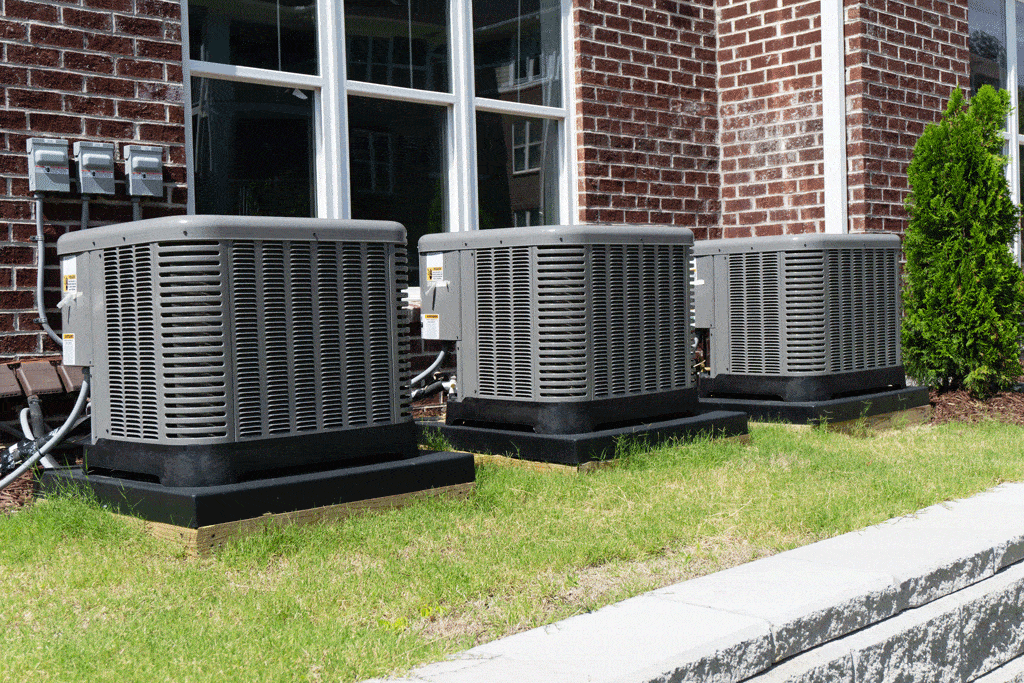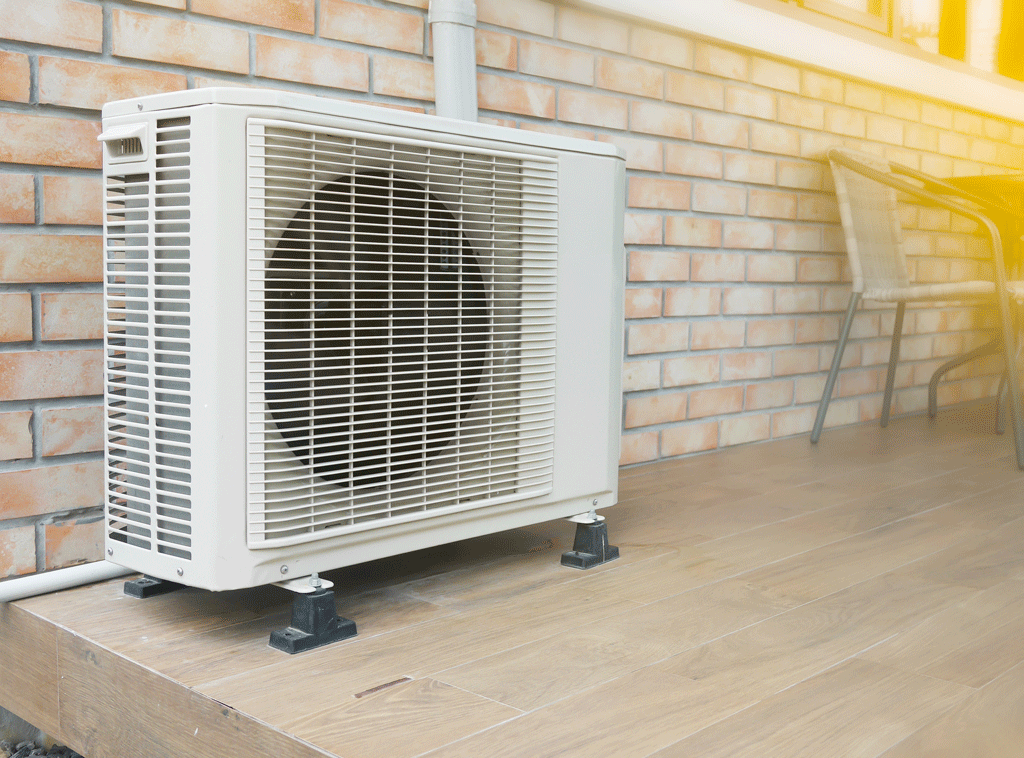
Chill Mastery: Your Air Conditioner Installation Guide
Imagine stepping into your home on a sweltering summer day to find a haven of cool, refreshing air.
The key to this comfort lies in a properly installed air conditioner—a task that may seem daunting at first. You might be wondering about the best unit for your home, the intricacies of installation, and how to maintain it for peak performance.
In this article, we will navigate the twists and turns of air conditioner installation.
We’ll explore how to choose the perfect system, the importance of professional installation, and the maintenance that keeps your unit humming. By the end, you’ll be equipped with the knowledge to make informed decisions for a cooler, more comfortable home.
What is Air Conditioner Installation?
Air conditioner installation is a crucial process that involves more than just plugging in a unit and turning it on. It’s about carefully integrating a system into your home that will provide consistent, efficient cooling when you need it most.
This process is essential for ensuring that your living space remains a sanctuary against the relentless heat, especially during those long summer months.
When you consider air conditioner installation, you’re looking at a series of steps that must be executed with precision.
It begins with selecting the right type of air conditioner for your space. Whether it’s a central system that cools your entire home, a window unit for a particular room, or a portable air conditioner for flexibility, the right choice depends on your specific needs and the layout of your home.
Once the appropriate unit is chosen, the next step is the actual installation. This involves electrical work, ductwork (for central AC systems), and ensuring that the unit is installed in an optimal location.
For instance, a window unit should be placed where it can provide even cooling and where it won’t be obstructed by furniture or drapes. Central systems require planning to ensure the ductwork is laid out efficiently and that the outdoor compressor has adequate space and ventilation.
Professional installation is highly recommended because it involves complex steps that can affect your home’s structure and the system’s efficiency.
Technicians will ensure that the unit is installed correctly, has the right amount of refrigerant, and that the airflow is balanced throughout your home. They will also test the system to make sure it operates as it should, providing you with the peace of mind that comes from knowing your air conditioner is installed correctly.
Moreover, proper air conditioner installation is not just about immediate comfort. It’s an investment in your home’s future, affecting your property’s value, your utility bills, and the air quality you breathe daily.
Also read: Mastering Air Conditioner Installation: Your Ultimate Guide
Understanding the Basics of Air Conditioner Installation
Selecting the Right Air Conditioner
The journey of air conditioner installation begins with choosing the right system.
This decision is pivotal because the type of air conditioner you select must align with your home’s size, layout, and your personal comfort needs. Whether it’s a split system for individual rooms or a central unit for whole-home comfort, each option offers different benefits.
The right choice ensures not just immediate relief from the heat but also long-term efficiency and cost-effectiveness.
Preparing for Installation
Preparation is key in air conditioner installation. It’s not just about the physical unit but also preparing the space where it will reside.
This might involve clearing an area, installing support brackets for a window unit, or preparing the ductwork for a central system. Proper preparation ensures that the installation process goes smoothly and reduces the risk of future issues.
The Installation Process
The actual installation is a critical phase where precision is paramount. It involves technical steps such as handling refrigerant, securing electrical connections, and ensuring proper ventilation.
For central systems, it’s about placing the outdoor unit in a location that allows for optimal performance and minimal noise disturbance. For window units, it’s about achieving a secure fit to prevent air leaks.
Each step is carried out with an eye for detail to ensure that your air conditioner installation results in a system that operates at peak efficiency.
Professional Expertise
Given the technicalities involved, professional installation is recommended.
Certified technicians have the expertise to handle complex tasks, from calculating the correct load to balancing the refrigerant levels. They ensure that the system complies with local building codes and operates safely and efficiently.
Their expertise can be the difference between a system that runs smoothly and one that causes ongoing issues.
The Impact of Proper Installation
Air conditioner installation is more than a day’s work—it’s a long-term investment in your home’s comfort.
A properly installed air conditioner not only cools your space but also contributes to improved air quality and energy savings. It’s about ensuring that your system runs efficiently, without placing undue stress on its components, leading to lower energy bills and a longer lifespan for your unit.
Air conditioner installation is a comprehensive process that lays the foundation for years of comfort and efficiency.
By understanding the basics, you’re better equipped to make informed decisions that lead to a cooler, more comfortable home environment.
How to Choose the Right Unit for Air Conditioner Installation
Assessing Your Space
The first step in air conditioner installation is to assess the size and layout of your space. This is crucial because the capacity of the air conditioner you choose must be proportionate to the area it needs to cool.
An undersized unit will struggle to cool your space effectively, leading to increased wear and tear, while an oversized unit can lead to unnecessary energy consumption and uneven temperature regulation.
A professional can perform a detailed load calculation to determine the perfect size for your needs, ensuring your unit is neither overworked nor wasteful.
Understanding Different Types of Air Conditioners
There are several types of air conditioners, each suited for different situations.
Central air conditioners are ideal for cooling multiple rooms or an entire house. Split systems offer a balance between efficiency and discreet installation, with an outdoor compressor unit and one or more indoor air handling units.
Window units are a more temporary solution, perfect for single rooms and smaller spaces. Portable air conditioners offer flexibility, as they can be moved from room to room.
Each type has its own installation requirements and benefits, so understanding these can help you make an informed decision.
Energy Efficiency Matters
In the realm of air conditioner installation, energy efficiency is a term you’ll encounter frequently. It’s important to consider the energy efficiency rating of the unit you’re considering.
Look for a high Seasonal Energy Efficiency Ratio (SEER) rating—the higher the SEER, the more efficient the unit. An energy-efficient air conditioner can significantly reduce your electricity bills and is also better for the environment.
Features and Functionality
Modern air conditioners come with a variety of features that can enhance comfort and convenience.
Programmable thermostats, smart home compatibility, variable speed motors, and even air purifying functions can be found in today’s units. When planning for air conditioner installation, consider which features align with your lifestyle and could contribute to a more comfortable and convenient home.
Also read: A Guide To Indoor Air Quality Testing In Your Home
Photo By ChristianChan at Shutterstock
The Importance of Professional Guidance
Navigating the myriad options for air conditioner installation can be overwhelming.
This is where professional guidance becomes invaluable. HVAC experts can provide insights into the best units for your specific circumstances, taking into account your geographic location, the local climate, and your personal preferences.
They can also advise on the latest technologies and models that would best suit your home and lifestyle.
Choosing the right unit for your air conditioner installation is a decision that will affect your home’s comfort for years to come.
By considering the size of your space, the type of unit, energy efficiency, and available features—and by seeking professional advice—you can ensure that you select a system that will keep you cool and comfortable efficiently and effectively.
Site Preparation for Air Conditioner Installation
Evaluating the Installation Area
Before the arrival of your new air conditioning unit, a critical step in the air conditioner installation process is evaluating and preparing the site where the unit will be installed.
This involves a thorough inspection of the area to ensure it can accommodate the new system. For outdoor units, this means a level surface that is free of debris and vegetation that could obstruct airflow or damage the unit.
For indoor installations, it’s about ensuring there’s enough wall space for split systems or an appropriate window for window units, with access to electrical outlets and proper support.
Enhancing Airflow Efficiency
Airflow is a key component of effective air conditioner installation. The site must allow for unobstructed air intake and exhaust.
This might involve trimming plants or shrubs that are too close to the outdoor unit or rearranging furniture for indoor installations to prevent blockages.
Ensuring good airflow will not only improve efficiency but also extend the life of the air conditioner by preventing overheating and reducing the workload on the system.
Addressing Safety and Accessibility
Safety should never be compromised during air conditioner installation.
The installation site should be easily accessible for maintenance and far enough from any water sources to avoid electrical hazards. Outdoor units should be placed on a concrete pad or secure brackets and at a safe distance from windows and doors to minimize noise disturbance.
Indoor units should be positioned where they will not be a tripping hazard and where they can be securely mounted to the wall or window frame.
Preparing for Ductwork and Wiring
If you’re installing a central air conditioning system, preparing for ductwork is an essential part of the site preparation.
This may involve adjusting the layout of existing ducts or installing new ones. Ensure that the ducts are clean and properly sealed to prevent air leaks. Wiring is another critical aspect; it must be up to code and capable of handling the electrical load of the new system.
An electrician can assess and upgrade your home’s wiring and circuitry to accommodate the new air conditioner.
Professional Consultation
A professional HVAC technician can provide invaluable assistance in preparing the site for your air conditioner installation.
They can identify potential issues with the proposed location, suggest improvements, and ensure that the site meets all requirements for a successful installation. Their expertise can help you avoid common pitfalls and set the stage for a smooth installation process.
Proper site preparation is the foundation of a successful air conditioner installation.
By carefully evaluating the installation area, enhancing airflow efficiency, addressing safety and accessibility, preparing for ductwork and wiring, and consulting with a professional, you can ensure that your air conditioning system is installed correctly and functions at its best from day one.
The Installation Process of Air Conditioner Installation
Initial Assessment and Measurements
The first step in the air conditioner installation process is a meticulous assessment of your home and the area where the unit will be installed.
This includes taking precise measurements to ensure the new system fits perfectly and operates efficiently. For central air systems, it involves evaluating the existing ductwork to determine if any modifications are necessary.
For split systems or window units, it’s about ensuring the space will accommodate the unit and that there’s a suitable power source nearby.
Installing the Indoor Unit
When it comes to split systems, the indoor unit needs to be mounted on an interior wall, typically opposite the outdoor unit.
This requires drilling holes through the wall for the piping, electrical cables, and drainage lines. The mounting must be level and secure to minimize vibrations and noise.
It’s also important to place it in a location that will allow for optimal air distribution throughout the room.
Setting Up the Outdoor Unit
The outdoor unit of a split system air conditioner installation is critical as it houses the compressor and condenser.
It should be placed on a flat, stable surface, such as a concrete pad, and in a location that’s free from direct sunlight and debris. There must be ample space around it to ensure proper airflow and easy access for maintenance.
The outdoor unit must be connected to the indoor unit with refrigerant lines, power cables, and a condensate drain, all of which should be properly insulated.
Ductwork and Ventilation
For central air conditioner installations, ductwork is an integral part of the process. This involves installing or modifying air ducts to ensure efficient airflow.
Each room needs a supply and return vent to circulate air properly. The ducts must be sealed and insulated to prevent energy loss and maintain consistent temperatures throughout the home.
Final Connections and Testing
Once the units and ductwork are in place, the final step in the air conditioner installation process is to make all electrical and refrigerant connections.
After these connections are made, the system must be thoroughly tested. This includes checking for leaks in the refrigerant lines, ensuring the thermostat is functioning correctly, and verifying that the air conditioner is producing the desired temperature output.
Professional Calibration
A professional HVAC technician will then calibrate the system to ensure it’s operating at peak efficiency.
This involves adjusting the refrigerant charge and airflow rate, as well as ensuring that all components are working harmoniously. Calibration is crucial as it affects the longevity and efficiency of the air conditioner, ultimately impacting your comfort and utility bills.
The installation process of AC installation is complex and requires a high level of precision and expertise.
From the initial assessment to the final testing and calibration, each step must be executed with care to ensure the system operates efficiently and effectively.
By understanding the intricacies of the process, you can better appreciate the importance of professional installation and enjoy a cool and comfortable home environment.
Also read: The Comprehensive Guide To Year-Round Comfort | Emergency Heating And Ac Repair Service
Photo By Pasuwan at Shutterstock
Post-Installation Checks for Air Conditioner Installation
System Start-Up and Initial Testing
After the physical installation of an air conditioning system, the first step in post-installation checks is the system start-up. This is when the unit is turned on to ensure that it powers up correctly.
Initial testing includes listening for any unusual noises, checking for the correct operation of the thermostat, and verifying that all components are functioning as they should.
This is a critical phase in AC installation, as it can reveal any immediate issues that need to be addressed.
Refrigerant and Pressure Checks
A key aspect of post-installation checks for air conditioner installation is ensuring the refrigerant levels are correct.
The HVAC technician will measure the pressure of the refrigerant to ensure it matches the specifications for the particular model of air conditioner. Incorrect refrigerant levels can lead to inefficient operation and increased wear on the system, so it’s vital that this step is performed accurately.
Airflow Measurement
Proper airflow is essential for an air conditioner to function efficiently.
During post-installation checks, technicians will measure airflow at various points in the system. This includes checking the air coming from the vents for proper temperature and flow rate. Adjustments may be made to the fan speed or duct dampers to achieve optimal airflow throughout the home.
Thermostat Calibration
The thermostat is the control center for your air conditioner, and it must be calibrated correctly to ensure it communicates accurately with the new system.
During post-installation checks, the technician will verify that the thermostat activates the system at the desired settings and that it responds appropriately to changes in room temperature.
Final Inspection and Customer Walk-Through
The final step in the AC installation process is a thorough inspection of the work area to ensure everything is clean and all tools and materials have been removed.
Then, the technician will typically do a walk-through with you, the homeowner, to demonstrate how to operate the new system. This includes explaining the functions of the thermostat, how to replace filters, and discussing any maintenance agreements or warranties.
Ensuring Compliance with Standards
Lastly, it’s important that the installation complies with all local building codes and manufacturer’s specifications.
The technician will review all aspects of the installation to ensure that it meets or exceeds these standards. Compliance is crucial not only for the safety and efficiency of the air conditioner but also for maintaining the validity of any warranties.
Post-installation checks are a vital part of the AC installation process. They ensure that the system is safe, efficient, and ready to provide comfort to your home.
By conducting a thorough series of tests and calibrations, HVAC professionals can assure homeowners that their new air conditioner will perform at its best for years to come.
The Evolution of Air Conditioner Installation
The Early Days of Air Conditioning
The story of AC installation began in the early 20th century when the first electrical air conditioning unit was invented.
Initially, these systems were large, cumbersome, and reserved for industrial applications or wealthy individuals. Installation at that time was a significant undertaking, often involving extensive modification to buildings to accommodate the bulky equipment.
The process was not just about cooling the air but also managing humidity, which was a major breakthrough in indoor climate control.
Advancements in Technology
As technology advanced, so did the methods and ease of air conditioner installation.
The units became smaller, more efficient, and more affordable for the average homeowner. Central air conditioning systems, which were once a luxury, started becoming a standard feature in new home construction.
This period saw the development of standardized ductwork, improved refrigerants, and more sophisticated thermostat controls, all of which streamlined the installation process and improved system performance.
The Rise of Energy Efficiency
In recent decades, there has been a significant shift towards energy efficiency in AC installation.
The introduction of regulations like the Seasonal Energy Efficiency Ratio (SEER) in the United States pushed manufacturers to create units that use less energy.
Installations now often include a thorough home energy audit to optimize the air conditioner’s efficiency, involving insulation, window treatments, and even the incorporation of smart home technology for better control over the home’s climate.
Modern Installation Practices
Today, air conditioner installation is a highly technical process that incorporates a variety of considerations to ensure maximum comfort and efficiency.
Installers must be knowledgeable about the latest in HVAC technology, including smart thermostats, zoning systems, and Wi-Fi-enabled units that can be controlled remotely.
The focus has shifted to not only installing an air conditioning unit but also ensuring that it is a part of an integrated home environment system.
Looking to the Future
The future of AC installation is likely to see even more innovation.
With the growing emphasis on sustainability, we may see the integration of solar power and other renewable energy sources into air conditioning systems.
The installation process may also become more automated, with advanced diagnostics to predict and prevent issues before they arise, ensuring that systems are always running at optimal performance.
The evolution of air conditioner installation reflects the broader trends in technology and society.
From the early, bulky units to today’s sleek, efficient systems, installation practices have transformed to prioritize efficiency, convenience, and integration into the smart home. As we look forward, the industry will continue to innovate, providing homeowners with even more advanced options for staying cool and comfortable.
Top 7 Tested and Proven Tips for Air Conditioner Installation
Understanding Your Cooling Needs
Before diving into AC installation, it’s essential to understand your specific cooling requirements.
This involves considering the size of your home, the local climate, and your personal preferences. A unit that’s too small won’t cool your home effectively, while one that’s too large can lead to increased humidity and energy waste.
Calculating the correct BTU (British Thermal Unit) rating for your space is a fundamental step that will guide you in selecting the right air conditioner for your needs.
Choosing the Right Type of Air Conditioner
There’s a variety of air conditioners available, and selecting the right type is a critical decision in the air conditioner installation process. Central air conditioning systems are ideal for cooling multiple rooms or entire homes, while split systems can provide targeted cooling without the need for ductwork. Window units and portable air conditioners offer flexibility for smaller spaces or temporary solutions.
Consider the pros and cons of each type in relation to your living situation and cooling demands.
Energy Efficiency is Key
Opting for an air conditioner with a high SEER rating is not just good for the environment—it’s also beneficial for your wallet in the long run.
Energy-efficient models may come with a higher upfront cost, but they can significantly reduce your monthly utility bills.
During the air conditioner installation, also consider additional energy-saving features like programmable thermostats or smart home systems that can optimize your cooling schedule based on your habits.
Professional Installation vs. DIY
While some air conditioner installations might seem straightforward, it’s often best to hire a professional.
An expert can ensure that your unit is installed correctly and safely, with all electrical and refrigerant handling done in compliance with local codes and regulations. Professional installers can also provide valuable advice on the best placement for your unit to ensure optimal performance and efficiency.
Regular Maintenance Post-Installation
After your air conditioner installation, regular maintenance is crucial to keep your system running smoothly. This includes routine checks like changing the air filter, cleaning the coils, and ensuring the drainage system is clear.
Establishing a maintenance schedule can prevent minor issues from becoming major problems and will extend the lifespan of your air conditioner.
Preparing Your Home for Installation
To facilitate a smooth air conditioner installation, prepare your home ahead of the technician’s arrival.
This might involve clearing the area around where the unit will be installed, ensuring there’s an accessible power source, and moving any furniture or obstacles that could hinder the installation process. A well-prepared space can save time and help the installation go off without a hitch.
Understanding the Warranty and Service Plans
Finally, make sure you understand the warranty that comes with your air conditioner and consider any additional service plans offered by the installer.
These can provide peace of mind and protect your investment, covering you for any potential repairs or issues that might arise after the installation is complete.
By following these top tips and strategies for air conditioner installation, you can ensure that your new cooling system is well-suited to your home, installed correctly, and maintained for optimal performance and longevity.
Photo By Nuroon Jampaklai at Shutterstock
One Hour Air Conditioning & Heating of Dallas and How It Can Help with Air Conditioner Installation
In the sweltering heat of Dallas, having a reliable air conditioning system is not just a luxury, it’s a necessity. And when it comes to AC installation, you need a name you can trust.
Enter One Hour Air Conditioning & Heating of Dallas, a beacon of professionalism and expertise in the realm of HVAC services.
-
Expertise in Local Climate Conditions
One Hour Air Conditioning & Heating of Dallas brings a wealth of knowledge regarding the specific climate challenges in the Dallas area.
They understand the importance of having a reliable air conditioner installation to combat the Texas heat. Their expertise in local weather patterns and temperature extremes means they can recommend the best air conditioning solutions tailored to withstand the region’s unique conditions.
2. Comprehensive Installation Services
From the initial consultation to the final installation, One Hour Air Conditioning & Heating of Dallas offers comprehensive services.
They handle every aspect of air conditioner installation, ensuring that each system is installed to the manufacturer’s specifications and local building codes.
Their thorough approach guarantees that your air conditioning unit will operate efficiently and effectively, providing maximum comfort in your home.
3. High-Quality Equipment and Materials
One Hour Air Conditioning & Heating of Dallas prides itself on using only high-quality equipment and materials for every air conditioner installation.
They partner with top manufacturers to provide their customers with the most reliable and durable air conditioning units available. This commitment to quality means that homeowners can enjoy a well-performing cooling system for many years.
4. Customized Solutions for Every Home
Understanding that every home is different, One Hour Air Conditioning & Heating of Dallas offers customized air conditioner installation services.
They assess each property’s specific needs, considering factors like square footage, layout, and insulation quality, to design a cooling system that is perfectly suited for the space. This personalized approach ensures that each customer receives the most efficient and cost-effective air conditioning solution.
5. Exceptional Customer Service
Customer service is a cornerstone of the One Hour Air Conditioning & Heating of Dallas experience. They are committed to providing clear communication, punctuality, and professional service.
Their team is available to answer any questions and address concerns throughout the air conditioner installation process, ensuring that customers feel informed and confident in their investment.
6. Post-Installation Support and Maintenance
After the air conditioner installation is complete, One Hour Air Conditioning & Heating of Dallas continues to support their customers with exceptional service.
They offer maintenance plans to keep air conditioning systems running smoothly, which includes regular check-ups and tune-ups. This proactive approach to maintenance can prevent unexpected breakdowns and extend the life of the air conditioning unit.
7. Easy Access to Reviews and Ratings
Prospective customers can easily access reviews and ratings for One Hour Air Conditioning & Heating of Dallas through their Google My Business link. This transparency allows homeowners to make informed decisions based on the experiences of others in their community.
The high level of satisfaction reflected in these reviews speaks to the quality and reliability of the services provided by One Hour Air Conditioning & Heating of Dallas.
8. Serving a Wide Range of Locations
One Hour Air Conditioning & Heating of Dallas serves a broad area, including Addison, Allen, Carrollton, Dallas, Frisco, Irving, Lewisville, McKinney, Plano, Richardson, and The Colony.
This extensive coverage ensures that a large number of homeowners in the Dallas region have access to their top-notch air conditioner installation services.
9. Call to Action for Service
For those in need of air conditioner installation, One Hour Air Conditioning & Heating of Dallas encourages homeowners to reach out and schedule a consultation.
With a simple call to their service number, customers can begin the process of ensuring their homes are equipped with a high-quality air conditioning system installed by trusted professionals.
One Hour Air Conditioning & Heating of Dallas stands out as a leader in air conditioner installation, offering expertise, quality, and service that homeowners can rely on.
Their commitment to customer satisfaction and their comprehensive approach to installation and maintenance make them a top choice for residents in the Dallas area looking to stay cool and comfortable year-round.
Conclusion
The journey of air conditioner installation is a blend of precision, expertise, and tailored solutions that come together to deliver comfort and efficiency to your home.
From understanding the basics of selecting the right air conditioning unit to the meticulous process of installation and the essential post-installation checks, each step is pivotal in ensuring that your living space becomes a haven of cool reprieve from the sweltering heat.
One Hour Air Conditioning & Heating of Dallas epitomizes the pinnacle of professional installation services, offering a deep understanding of the local Dallas climate and the unique needs of each residence.
Their commitment to using high-quality equipment and providing customized solutions underscores their dedication to customer satisfaction.
The importance of choosing a trusted service provider for your air conditioner installation cannot be overstated, as it guarantees not just the immediate comfort but also the long-term reliability and efficiency of your cooling system.
The evolution of air conditioning technology and installation practices reflects a broader commitment to innovation, sustainability, and enhanced living standards.
As we have seen, modern installations are more than just about placing a cooling unit; they are about integrating a system into the fabric of your home that is energy-efficient, smart, and responsive to your lifestyle needs.
Finally, the ongoing support and maintenance offered by One Hour Air Conditioning & Heating of Dallas ensure that your investment is protected and that your air conditioning system continues to perform at its best.
Their comprehensive service, from the initial assessment to the ease of accessing reviews and scheduling maintenance, provides peace of mind that is invaluable.
As we embrace the advancements in air conditioning technology and installation services, we can look forward to cooler, more comfortable homes that are also kind to our wallets and the environment.
The expertise and customer-centric approach of companies like One Hour Air Conditioning & Heating of Dallas are not just about providing a service; they are about enhancing the quality of life for every homeowner they serve.
Photo By Maks_lab at Shutterstock
FAQS
1.How do I choose the right air conditioner for my Dallas home?
The right air conditioner will depend on several factors including the size of your home, your specific cooling needs, and the local climate. It’s best to consult with a professional like One Hour Air Conditioning & Heating of Dallas to assess your space and recommend the most efficient unit.
2.What is the most energy-efficient air conditioner to install?
Look for air conditioners with a high SEER (Seasonal Energy Efficiency Ratio) rating. The higher the SEER rating, the more energy-efficient the unit is. One Hour Air Conditioning & Heating can guide you to the latest models that offer the best energy efficiency.
3.Can I install an air conditioner myself?
While some smaller units can be DIY projects, for safety and efficiency, it’s recommended to have a professional install your air conditioning system, especially for central air or split systems.
4.How long does air conditioner installation take?
The installation time can vary depending on the type of air conditioner and the complexity of your home’s layout. Generally, a professional installation can take anywhere from a few hours to a full day.
5.What should I do to prepare my home for air conditioner installation?
Ensure the area where the unit will be installed is clear of furniture and debris. If you’re having a central system installed, make sure there’s easy access to your ductwork.
- How often should my air conditioning system be serviced?
It’s recommended to have your air conditioning system serviced at least once a year to ensure it’s running efficiently and to prevent any potential issues.
- What is included in post-installation checks?
Post-installation checks include system start-up, refrigerant and pressure checks, airflow measurement, thermostat calibration, and a final inspection to ensure everything is functioning correctly.
- Are there any rebates available for installing a new air conditioner?
Rebates can depend on your location and the model of air conditioner you choose. One Hour Air Conditioning & Heating of Dallas can provide information on any current rebates or incentives.
- What maintenance tasks can I perform myself?
Homeowners can replace or clean air filters, keep the area around the outdoor unit clear, and ensure the indoor vents are not blocked. For anything more technical, it’s best to contact a professional.
10.How can I ensure my air conditioner installation is up to code?
Hiring a reputable company like One Hour Air Conditioning & Heating of Dallas ensures that your installation will meet all local building codes and manufacturer specifications. They will handle all the necessary permits and inspections.
See our most recent blog on this topic here.
Check out our reviews here
Photo By Konstantin L at Shutterstock
Dustin Hufsey









